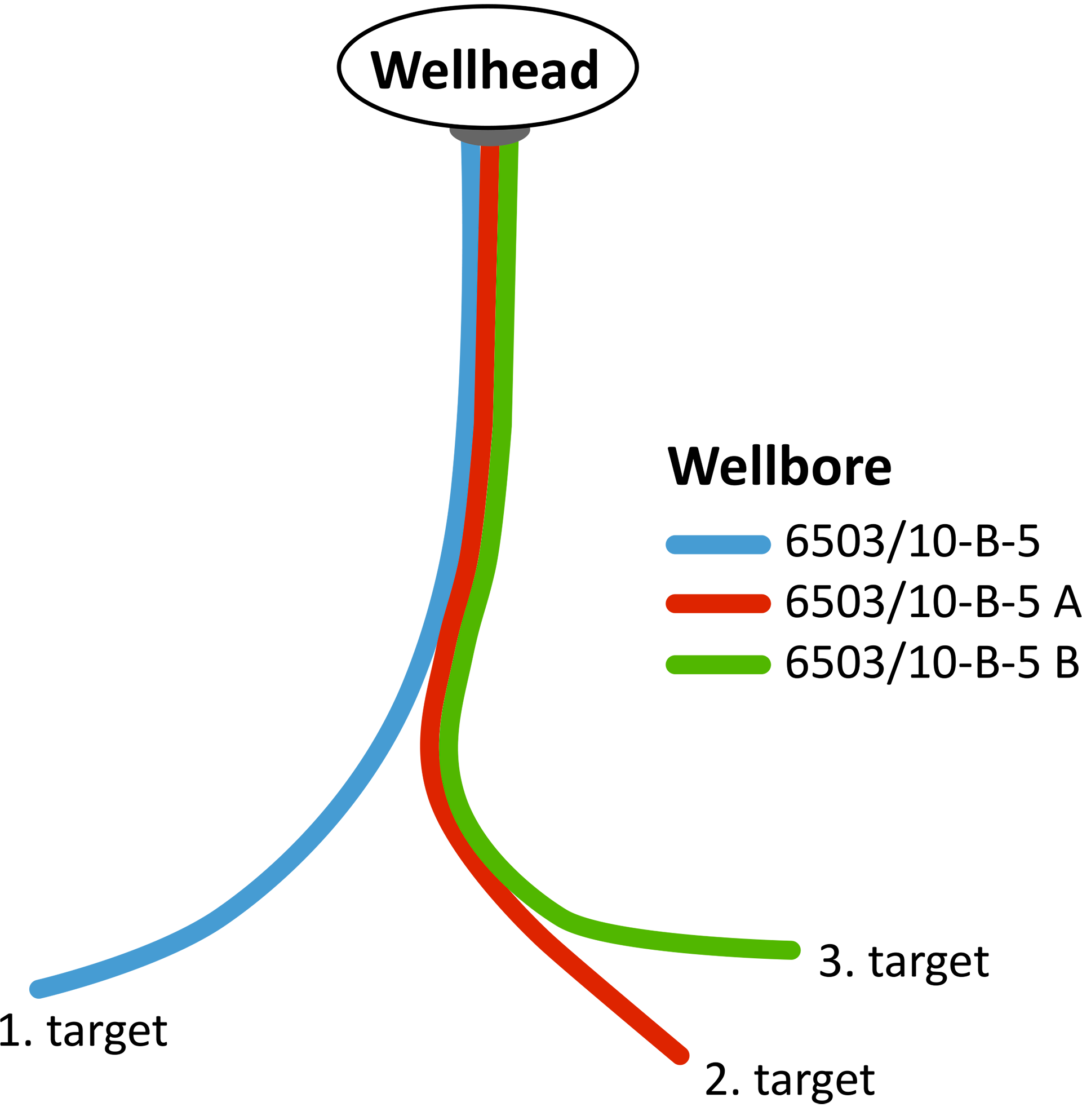Well classification
All wells and wellbores drilled on the Norwegian shelf are assigned a number, and often also a popular name.
Before commencing drilling, the operator must submit a form to us for name assignment and classification.

Our guidelines for how wells and wellbores on the Norwegian shelf are to be designated relate to all types of wells. The official designations are based on the block and quadrant in which the well is drilled (for example 34/8-13 A). Popular names are also used on occasion (for example Titan).
The operator must fill out a form for naming and classification of all wellbores. The form must be sent to us no later than two weeks prior to start-up of drilling.
Exploration wells
The Resource Management Regulations define an exploration well as a well that is drilled to prove potential petroleum deposits, or to obtain information needed to delineate a proven deposit.
We grant permission for exploration drilling, and assigns the proper designation to the wellbore. Such a permit must be granted for the respective well or wellbore before drilling activity is initiated.
The permit is granted on the basis of registration applications and drilling programs, and on the condition that all other permits and consents required by other authorities have been secured.
Exploration wells are divided in two categories: wildcat wells and appraisal wells.
Development wells
Under the Resource Management Regulations, this is a common designation for wells used to produce petroleum.
We assign wellbore designations based on forms submitted by the operator. Development wells are divided into the categories production, injection and observation wells.
Other wells
Other boreholes are defined in Section 3 of the Resource Management Regulations: Holes drilled in order to acquire information on the properties of the rock and/or to conduct geotechnical surveys to determine the location of facilities, and which are not drilled to prove or delimit a petroleum deposit or to produce or inject petroleum, water or other medium.
In reality, the definition includes two types of boreholes that are regulated by different provisions:
- For route surveys and other soil surveys, boreholes can be drilled to study the subsurface before a facility is placed. These boreholes cannot be drilled deeper than 200 metres below the seabed, cf. Section 30 of the Petroleum Regulations.
- When exploring for petroleum, "shallow drillings" can be carried out, cf. Section 4 of the Petroleum Regulations. These are boreholes that are drilled to acquire data on geological development of the rocks to explore for petroleum. In addition to the information on the geology at the drill site, the information can be linked with seismic data to calibrate seismic reflectors against geological units and to depth-convert seismic data.
These boreholes previously had a depth restriction of 200 metres, but the Norwegian Offshore Directorate can now stipulate the depth. For drilling deeper than 200 metres below the seabed, an application for consent must be submitted to the Norwegian Ocean Industry Authority, in addition to registration of the borehole with the Norwegian Offshore Directorate, cf. Section 25 of the Management Regulations.
Explanation of symbols
On our FactPages you can obtain information about the location of all exploration and development wells. A legend shows the various types of wellbores.
Updated: 22/12/2023